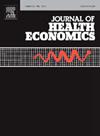供给侧药物管制政策何时能拯救生命?来自药房美沙酮限制的证据
IF 3.6
2区 经济学
Q1 ECONOMICS
引用次数: 0
摘要
文献通常发现,供应方面的药物管制政策是对毒品流行的无效反应,因为它们导致对更危险的非法药物的替代。我们记录了一项政策,该政策是为了应对21世纪初美国美沙酮和处方阿片类药物相互交织的流行病而实施的,与此截然相反。2008年,美国缉毒局和药品制造商停止向全国所有药店运送强效美沙酮制剂,原因是担心它们与不断上升的过量死亡率有关。然而,我们表明,这种反应并没有导致对非法药物的替代,而是导致了对更安全的美沙酮产品的替代,并在两年内防止了大约1600例过量死亡。调查结果强调指出,如果供应方药物管制政策的目标适当,能够促使消费者使用更安全而不是更有害的物质,那么这些政策可以有效地应对毒品流行。本文章由计算机程序翻译,如有差异,请以英文原文为准。
When do supply-side drug control policies save lives? Evidence from pharmacy methadone restrictions
The literature commonly finds that supply-side drug control policies are an ineffective response to drug epidemics because they cause substitution to more dangerous illicit drugs. We document a policy that was implemented in response to the intertwined methadone and prescription opioid epidemics in the U.S. in the early 2000s and that sharply contradicts this. In 2008, the U.S. Drug Enforcement Administration and drug manufacturers halted shipments of highly potent methadone formulations to all pharmacies nationwide due to concerns over their involvement in rising overdose death rates. However, rather than causing substitution to illicit drugs, we show this response caused substitution to safer methadone products and prevented roughly 1,600 overdose deaths over a two-year period. Findings underscore that supply-side drug control policies can be effective responses to drug epidemics in contexts where they are appropriately targeted to push consumers towards safer rather than more harmful substances.
求助全文
通过发布文献求助,成功后即可免费获取论文全文。
去求助
来源期刊

Journal of Health Economics
医学-卫生保健
CiteScore
6.10
自引率
2.90%
发文量
96
审稿时长
49 days
期刊介绍:
This journal seeks articles related to the economics of health and medical care. Its scope will include the following topics:
Production and supply of health services;
Demand and utilization of health services;
Financing of health services;
Determinants of health, including investments in health and risky health behaviors;
Economic consequences of ill-health;
Behavioral models of demanders, suppliers and other health care agencies;
Evaluation of policy interventions that yield economic insights;
Efficiency and distributional aspects of health policy;
and such other topics as the Editors may deem appropriate.
 求助内容:
求助内容: 应助结果提醒方式:
应助结果提醒方式:


